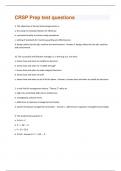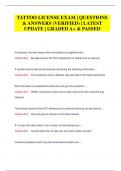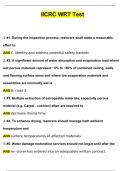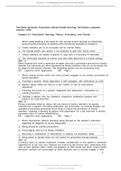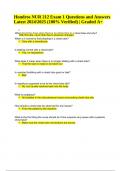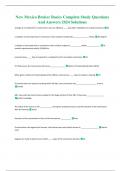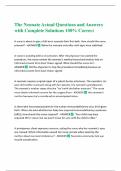Exam (elaborations)
Music Content Praxis (5113) Technology Exam Questions With 100% Correct Answers 2024.
- Course
- Institution
Music Content Praxis (5113) Technology Exam Questions With 100% Correct Answers 2024. DAW (Digital Audio Workstation) Computer based recording, sequencing, and mixing tool for the modern musician. It includes the computer, the digital audio software, a digital audio interface, optional plug-ins...
[Show more]




